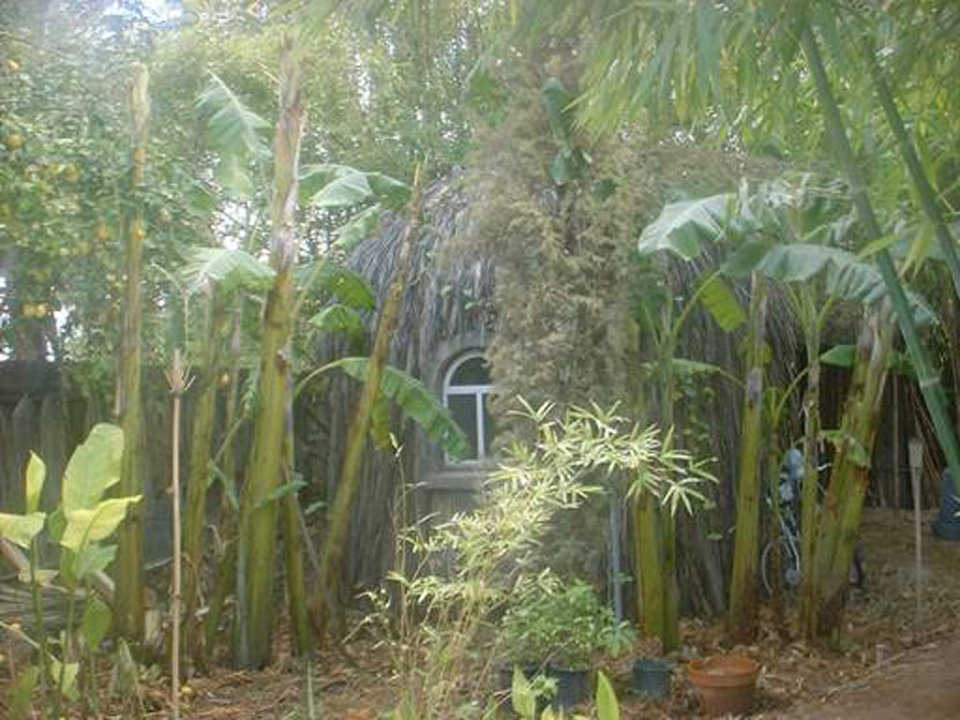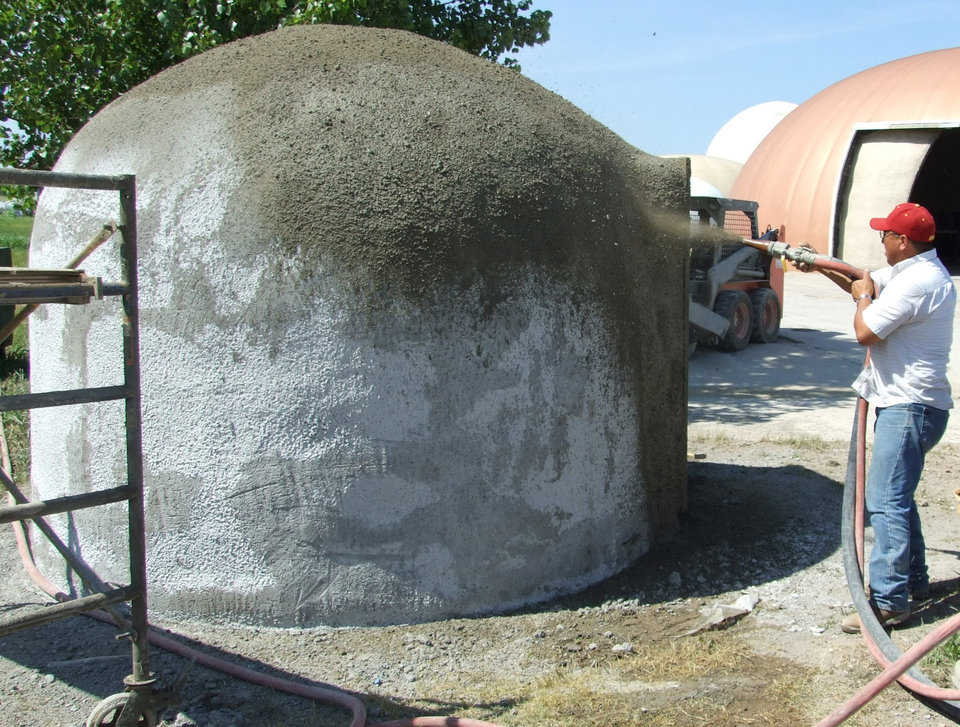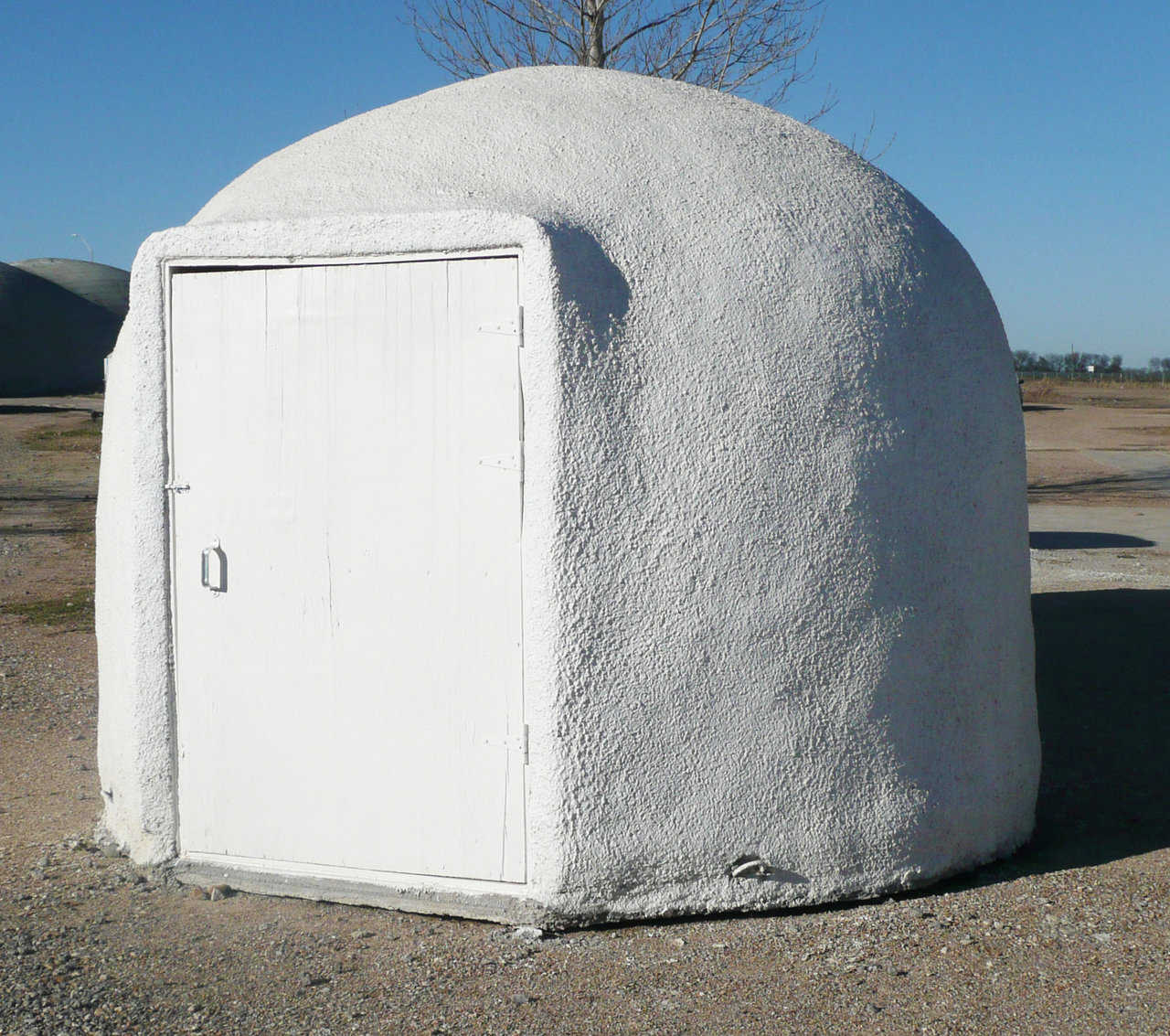The EcoShell
An EcoShell, like a Monolithic Dome, is built of reinforced concrete. But unlike that of a Monolithic Dome, the EcoShell’s Airform is removed and reused. Nor is an EcoShell usually sprayed with an insulating blanket of polyurethane foam. Obviously, an EcoShell and a Monolithic Dome are very different structures.
Nevertheless we are often asked: Can EcoShells be coated with foam? The answer is a very cautious Yes because it’s not a smart solution. (See The EcoShell vs.The Monolithic Dome.)
Next question: Is there any way that EcoShells can be insulated?
EcoShells make ideal low cost, low maintenance housing for the impoverished masses in developing countries with tropical climates. So, generally speaking, insulating them is an unnecessary added expense.
But special situations may occur that justify insulating an EcoShell. In that case, you might consider one of the following.
Thatching
Thatching probably is the world’s oldest roofing material, and it will keep a shelter cooler or warmer. The art and craft of topping a structure with indigenous materials, such as straw, reed, grass, currently is still used in developing nations. It’s low cost, but it has its drawbacks. Thatching often includes an infestation of insects and sometimes rodents, and it can be a fire risk.
However, an EcoShell’s concrete mitigates those drawbacks. Those pesky infestants cannot penetrate or eat concrete, so they’re less likely to move out of the thatching and into the living area. Then too, fire can burn the thatching but will not destroy the concrete home, and thatching can be replaced.
Expanded Polystyrene, Perlite or Vermiculite
The addition of expanded polystyrene beads in the concrete is another option for making an insulated building out of the Ecoshell. It can be hand plastered or sprayed in place. (See “Monolithic Adds Recycled Styrofoam to EcoShell Construction Process” Video below.)
Concrete containing styrene beads is not as strong as standard concrete. Therefore we are using full-strength concrete to build the main shell, then adding the insulated concrete over the exterior, in a thickness of two to three inches. It is simple to do. Add the polystyrene beads up to fifty percent of the volume of the aggregate.
Note: We have been able to buy re-grind. Re-grind is the gathering up of styrofoam from various sources and putting in through a grinder to make pellets. This is an option in many places. Polystyrene pellets may also be purchased.
Perlite is defined by www.singlesourceroofing.com as, “An aggregate used in lightweight insulating concrete and in preformed perlitic insulation boards, formed by heating and expanding siliceous volcanic glass.”
Vermiculite, as defined by www.energyweb.net, “Flakes of raw vermiculite concentrate are micaceous in appearance and contain interlayer water in their structure. When the flakes are heated rapidly at a temperature above 870 C, the water flashes into steam, and the flakes expand into accordionlike particles. This process is called exfoliation, or expansion, and the resulting lightweight material is chemically inert, fire resistant, and odorless. In lightweight plaster and concrete, vermiculite provides good thermal insulation.”
Perlite or vermiculite added as an aggregate to concrete and spread over an EcoShell to a thickness of six inches would make a tremendous difference in the heating and cooling of the structure.
Final question: Would such an insulation be as good as that of a Monolithic Dome?
Answer: Absolutely not. It’s simply another low-cost alternative.
Updated: March 12, 2009

Thatching — Thatching is probably the world’s oldest roofing material — straw, reed, grass, etc. It is currently still used in developing nations because of its low cost.

Regrind Styrofoam — Regrind styrofoam is exactly what it sounds like, old styrofoam cups, plates, packing, etc. ground up into pieces from 1/4" down. The ground up styrofoam is mixed into the concrete and either applied by hand or sprayed on. (Michael South)
